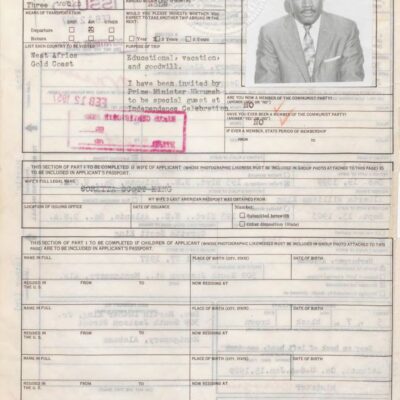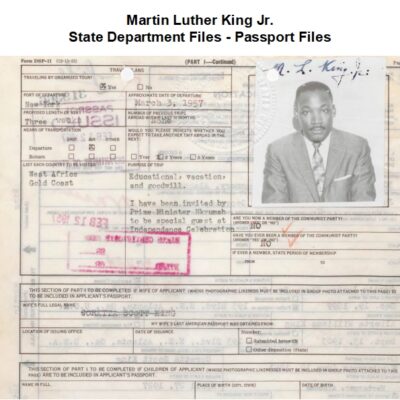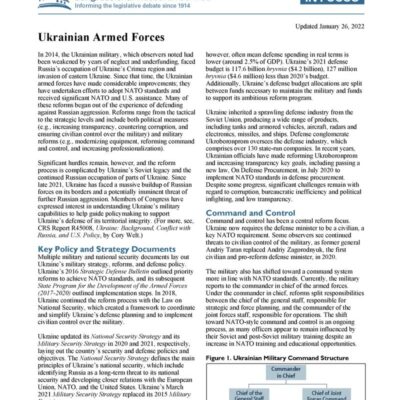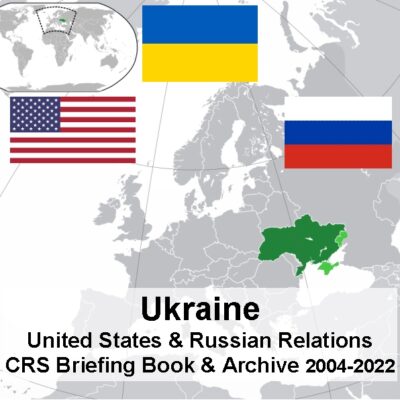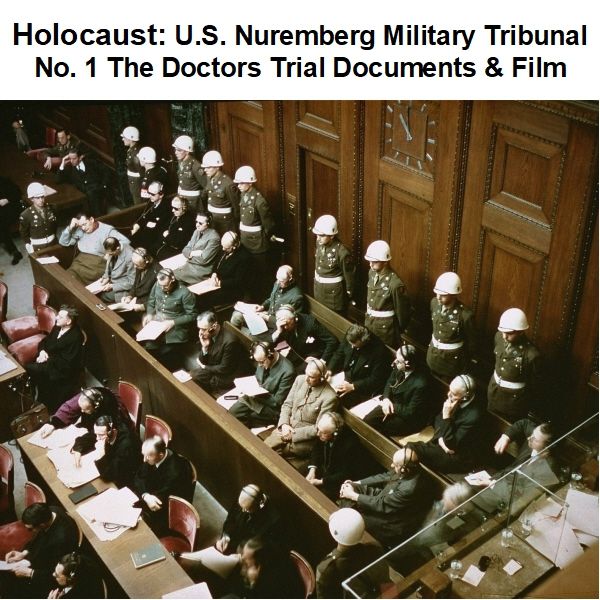
Holocaust: U.S. Nuremberg Military Tribunal No. 1 The Doctors Trial Documents & Film
$19.50
Description
Nuremberg Doctors’ Trial: Atrocities and Accountability
Pre-September 1, 1939:
- Medical experiments on human beings, tortures, and atrocities are planned and conducted in Germany, often disregarding established medical practice. These are not isolated acts but are the result of high-level policy and planning.
- The “Ahnenerbe” Society and its Institute for Military Scientific Research are active, with Wolfram Sievers as Reich Manager and Deputy Chairman of the Managing Board of Directors of the Reich Research Council.
- The Anatomical Institute of the Reich University of Strassburg is involved in the collection of human remains.
September 1, 1939:
- Adolf Hitler issues a directive initiating the “euthanasia” program. This program leads to the secret killing of aged, insane, incurably ill, and deformed German citizens in sanatoriums in Germany. It also includes the clandestine murder of foreign workers. These killings in gas chambers and by injections serve as a proving ground for larger mass extermination installations.
Throughout World War II (Approx. 1939-1945):
- Medical Experiments Conducted:High Altitude Experiments: To investigate the effects of low pressure on individuals.
- Freezing Experiments: To test human resistance to extremely low temperatures.
- Malaria Experiments: To develop controls over the recurring nature of the disease.
- Mustard Gas Experiments: Part of a general research program in gas warfare.
- Sulfanilamide Experiments: To test the efficacy of the drug in bone, muscle, and nerve regeneration, and bone transplantation.
- Seawater Experiments: To test methods of rendering seawater potable.
- Epidemic Jaundice Experiments: To develop an antitoxin against the disease.
- Sterilization Experiments: To test techniques for preventing further propagation of the mentally and physically defective.
- Typhus Experiments: To investigate the value of various vaccines.
- Poison Experiments: To test the efficacy of certain poisons.
- Incendiary Bomb Experiments: To find better treatment for phosphorus burns.
- Concentration camp inmates are murdered for the explicit purpose of collecting skulls and skeletons for the Anatomical Institute of the Reich University of Strassburg (over 100 such cases mentioned).
- Dr. Waldemar Hoven serves as Chief Physician of the Buchenwald Concentration Camp.
- Dr. Herta Oberheuser serves as a physician at the Ravensbrueck Concentration Camp.
- Dr. Karl Gebhardt, personal physician to Himmler, conducts experiments and is assisted by Fritz Fischer and Herta Oberheuser at the hospital at Hohenlychen.
- Karl Brandt serves as Hitler’s personal physician, Reich Commissioner for Health and Sanitation, and a member of the Reich Research Council.
- Rudolf Brandt serves as Himmler’s Personal Administrative Officer and Chief of the Ministerial Office in the Reich Ministry of the Interior.
- Wolfram Sievers oversees the “Ahnenerbe” Society and its research.
- Joachim Mrugowsky serves as Chief Hygienist of the Reich Physician SS and Police and Chief of the Hygienic Institute of the Waffen SS.
- Helmut Poppendick serves as Chief of the Personal Staff of the Reich Physician SS and Police.
- Karl Genzken serves as Chief of the Medical Department of the Waffen SS.
- Siegfried Handloser serves as Medical Inspector of the Army and Chief of the Medical Services of the Armed Forces.
- Paul Rostock serves as Surgical Adviser to the Army and Chief of the Office for Medical Science and Research under Karl Brandt.
- Oskar Schroeder serves as Chief of Staff of the Inspectorate of the Medical Service of the Luftwaffe and Chief of the Medical Service of the Luftwaffe.
- Hermann Becker-Freyseng and Georg August Weltz are involved in aviation medicine for the Luftwaffe.
- Wilhelm Beiglboeck serves as a consulting physician to the Luftwaffe.
- Gerhard Rose is involved in tropical medicine and hygiene for the Luftwaffe.
- Siegfried Ruff, Hans Wolfgang Romberg, and Konrad Schaefer are involved with aviation medicine research at the German Experimental Institute for Aviation or the Institute of Aviation Medicine.
- Adolf Pokorny, a physician specializing in skin and venereal diseases, is also among those indicted.
Post-World War II / Allied Occupation (Prior to December 9, 1946):
- Allied troops discover the remains of concentration camp inmates, including skeletons, in Strassburg.
- Pre-trial interrogations of defendants, including Karl Brandt, Wolfram Sievers, Karl Gebhardt, Herta Oberheuser, Fritz Fischer, Karl Bodenschatz, and Karl Friedrich Brunner, are conducted by the Supreme Headquarters Allied Expeditionary Force (SHEAF) and the Office of the U.S. Chief of Counsel for the Prosecution of Axis Criminality.
- Leo Alexander becomes a leading medical advisor for the war crimes trials in Nuremberg and contributes to the Nuremberg Code, which establishes legal and ethical principles for scientific experiments on humans.
November 21, 1946:
- The “Medical Case,” or “Doctors Trial” (United States of America v. Karl Brandt, et al.), the first of 12 subsequent Nuremberg Military Tribunals under Control Council Law No. 10, officially begins in Nuremberg.
December 9, 1946:
- BG Telford Taylor, Chief of Counsel for War Crimes, delivers his opening statement for Nuremberg Military Tribunal Case No. 1, highlighting the immense scale and brutality of the crimes.
November 21, 1946 – August 20, 1947:
- The “Doctors Trial” proceeds.
- Court proceedings, including arraignments (all defendants plead not guilty), opening and closing statements from prosecution and defense, are held.
- Evidence is presented, including prosecution and defense exhibits and document books.
- The prosecution argues that the medical experiments and “euthanasia” program were high-level policy, not isolated acts, and were carried out with extreme brutality.
- The tribunal disregards Count One (participation in a common design or conspiracy).
- Fifteen defendants are found guilty, and eight are acquitted on Count Two (war crimes) and Count Three (crimes against humanity).
- Ten defendants are found guilty on Count Four (membership in a criminal organization).
August 20, 1947:
- The judgment and sentences are delivered for the “Doctors Trial.”
- Acquittals: Kurt Blome, Adolf Pokorny, Hans Wolfgang Romberg, Paul Rostock, Siegfried Ruff, Konrad Schaefer, and Georg August Weltz are acquitted.
- Death Sentences: Viktor Brack, Karl Brandt, Rudolf Brandt, Waldemar Hoven, Karl Gebhardt, Joachim Mrugowsky, and Wolfram Sievers are sentenced to death.
- Life Imprisonment: Fritz Fischer, Karl Genzken, Siegfried Handloser, Gerhard Rose, and Oskar Schroeder are sentenced to life imprisonment.
- Varying Terms of Imprisonment: Hermann Becker-Freyseng, Wilhelm Beiglboeck, Herta Oberheuser, and Helmut Poppendick receive varying terms of years.
Cast of Characters
Prosecution & Legal Personnel:
- BG Telford Taylor: Chief of Counsel for War Crimes for the U.S. Nuremberg Military Tribunals. He delivered the powerful opening statement for the Doctors Trial, emphasizing the scale of the atrocities.
- Leo Alexander: An American psychiatrist, neurologist, educator, and author of Austrian-Jewish origin. He was a leading medical advisor to the war crimes trials in Nuremberg and played a key role in writing the Nuremberg Code, which established ethical and legal principles for human experimentation.
Defendants (Principle People Mentioned):
- Karl Brandt: Personal physician to Adolf Hitler, Gruppenführer in the SS, and Generalleutnant in the Waffen SS. He was also Reich Commissioner for Health and Sanitation and a member of the Reich Research Council. Sentenced to death.
- Rudolf Brandt: Standartenführer (Colonel) in the Allgemeine SS, Personal Administrative Officer to Reichsfuehrer SS Himmler, and Chief of the Ministerial Office in the Reich Ministry of the Interior. Sentenced to death.
- Viktor Brack: Oberführer in the SS and Sturmbannführer (Major) in the Waffen SS. He was the Chief Administrative Officer in the Chancellery of the Fuehrer to the NSDAP, deeply involved in the “euthanasia” program. Sentenced to death.
- Karl Gebhardt: Gruppenführer in the SS and Generalleutnant in the Waffen SS. Personal physician to Reichsfuehrer SS Himmler, Chief Surgeon of the Staff of the Reich Physician SS and Police, and President of the German Red Cross. Sentenced to death.
- Waldemar Hoven: Hauptsturmführer (Captain) in the Waffen SS and Chief Physician of the Buchenwald Concentration Camp. Sentenced to death.
- Joachim Mrugowsky: Oberführer (Senior Colonel) in the Waffen SS. Chief Hygienist of the Reich Physician SS and Police and Chief of the Hygienic Institute of the Waffen SS. Sentenced to death.
- Wolfram Sievers: Standartenführer in the SS. Reich Manager of the “Ahnenerbe” Society and Director of its Institute for Military Scientific Research. Deputy Chairman of the Managing Board of Directors of the Reich Research Council. Sentenced to death.
- Fritz Fischer: Sturmbannführer in the Waffen SS and assistant physician to Karl Gebhardt at the hospital at Hohenlychen. Sentenced to life imprisonment.
- Karl Genzken: Gruppenführer in the SS and Generalleutnant in the Waffen SS. Chief of the Medical Department of the Waffen SS. Sentenced to life imprisonment.
- Siegfried Handloser: Generaloberstabsarzt (Lieutenant General, Medical Service). Medical Inspector of the Army and Chief of the Medical Services of the Armed Forces. Sentenced to life imprisonment.
- Gerhard Rose: Generalarzt of the Luftwaffe (Brigadier General, Medical Service of the Air Force). Vice President, Chief of the Department for Tropical Medicine, and Professor of the Robert Koch Institute. Hygienic Adviser for Tropical Medicine to the Chief of the Medical Service of the Luftwaffe. Sentenced to life imprisonment.
- Oskar Schroeder: Generaloberstabsarzt. Chief of Staff of the Inspectorate of the Medical Service of the Luftwaffe and Chief of the Medical Service of the Luftwaffe. Sentenced to life imprisonment.
- Hermann Becker-Freyseng: Stabsarzt in the Luftwaffe (Captain, Medical Service of the Air Force) and Chief of the Department for Aviation Medicine of the Medical Service of the Luftwaffe. Received a term of years.
- Wilhelm Beiglboeck: Consulting physician to the Luftwaffe. Received a term of years.
- Herta Oberheuser: Physician at the Ravensbrueck Concentration Camp and assistant physician to Karl Gebhardt at the hospital at Hohenlychen. Received a term of years.
- Helmut Poppendick: Oberführer in the SS and Chief of the Personal Staff of the Reich Physician SS and Police. Received a term of years.
- Kurt Blome: Deputy of the Reichsgesundheitsführer (Reich Health Leader) and Plenipotentiary for Cancer Research in the Reich Research Council. Acquitted.
- Adolf Pokorny: Physician, specialist in skin and venereal diseases. Acquitted.
- Hans Wolfgang Romberg: Physician on the staff of the Department for Aviation Medicine at the German Experimental Institute for Aviation. Acquitted.
- Paul Rostock: Chief Surgeon of the Surgical Clinic in Berlin, Surgical Adviser to the Army, and Chief of the Office for Medical Science and Research under Karl Brandt. Acquitted.
- Siegfried Ruff: Director of the Department for Aviation Medicine at the Deutsche Versuchsanstalt fuer Luftfahrt (German Experimental Institute for Aviation). Acquitted.
- Konrad Schaefer: Physician on the staff of the Institute of Aviation Medicine in Berlin. Acquitted.
- Georg August Weltz: Oberfeldarzt in the Luftwaffe (Lieutenant Colonel, Medical Service of the Air Force) and Chief of the Institut fuer Luftfahrtmedizin (Institute for Aviation Medicine) in Munich. Acquitted.
Other Mentioned Individuals:
- Adolf Hitler: Leader of Nazi Germany, who issued the directive for the “euthanasia” program on September 1, 1939.
- Heinrich Himmler: Reichsfuehrer SS, to whom Karl Gebhardt was a personal physician and Rudolf Brandt was a personal administrative officer.
Holocaust: U.S. Nuremberg Military Tribunal No. 1 The Doctors Trial Documents & Film
This collection contains 24,084 pages of documents and 2 hours and 14 minutes of film.
United States of America v. Karl Brandt, et al. This trial has become known as the Medical Case or the Doctors Trial, because 20 of the 23 defendants were doctors, and the charges were related principally to medical experimentation on human beings.
“The defendants in this case are charged with murders, tortures, and other atrocities committed in the name of medical science. The victims of these crimes are numbered in the hundreds of thousands. A handful only are still alive; a few of the survivors will appear in this courtroom. But most of these miserable victims were slaughtered outright or died during the course of the tortures to which they were subjected. For the most part they are nameless dead. To their murderers, these wretched people were not individuals at all They came in wholesale lots and were treated worse than animals.” —-BG Telford Taylor, Chief of Counsel for War Crimes, Opening Statement, Nuremberg Military Tribunal Case No. 1, December 9, 1946.
This collection includes:
Leo Alexander Papers
979 pages selected from the papers of Leo Alexander held at the Harvard Law School Library. Alexander was a leading medical advisor to the various administrative bodies of the war crimes trials that took place in Nurenberg. The American psychiatrist, neurologist, educator, and author, of Austrian-Jewish origin wrote part of the Nuremberg Code, which provides legal and ethical principles for scientific experiments on humans. Materials include trial documents, correspondences and articles and memoranda written by, or with contributions from Alexander. Writings include: Essentials of the Nuremberg Code, Ethical and Non-Ethical Experimentation on Human Beings, Neuropsychiatry in Wartime Germany, One Major Aim of German Vivisectionists Ktenology as a Scientific Technique of Genocide, and The Last Days of Dachau.
Pre-Trial Interrogation Transcripts
447 pages of transcripts of interrogations of defendants performed by the Supreme Headquarters Allied Expeditionary Force (SHEAF) and the Office of the U.S. Chief of Counsel for the Prosecution of Axis Criminality. Defendants and interviewees include Karl Brandt, Wolfram Sievers, Karl Gebhardt, Herta Oberheuser, Fritz Fischer, Karl Bodenschatz, and Karl Friedrich Brunner.
Trials of War Criminals Before the Nuernberg Military Tribunals Under Control Council Law No. 10 Volumes 1 & 2.
1,394 pages from volume 1 and excerpts of volume 2 published by the International Military Tribunal at Nuremberg. Contains a snapshot of the Doctors Trial and a synopsis of the cases’ documents.
War Crimes Trials – Case No. 1 (Medical Case) Signal Corps Films
2 hours and 14 minutes of film, from 15 selected rolls of films made by the U.S. Army Signal Corps of the War Crimes Trials – Case No. 1 (Medical Case).
Records of the United States Nuernberg War Crimes Trials United States of America V. Karl Brandt Et Al. (Case 1) November 21, 1946-August 20, 1947, Also Known As the “Medical” Case or the Doctors Trial.
21,207 pages of files concerning United States of America v. Karl Brandt et at., or the “Medical” Case. The first of 12 trials of accused Third Reich war criminals conducted by the U.S. Government from 1946 to 1949 at Nuernberg, subsequent to the International Military Tribunal held in the same city. Copied from microfilm created by the National Archives and Records Administration of the National Archives Collection of World War II War Crimes Records, Record Group 238.
These records consist of English-language versions of official transcripts of court proceedings, prosecution and defense briefs, and final pleas of the defendants as well as prosecution and defense exhibits and document books in different languages. Prosecution closing statements and briefs on all defendants (English and German Versions).
The crimes charged in the Brandt case consisted largely of medical experiments performed on defenseless concentration camp inmates against their will; “euthanasia” carried out on the mentally disabled, the physically sick, the aged, and ethnic and racial groups; and the murder of concentration camp inmates for the express purpose of collecting skulls and skeletons for the Anatomical Institute of the Reich University of Strassburg.
The following medical experiments were conducted:
1. High altitude: to investigate effects of low pressure on persons.
2. Freezing: to test human resistance to extremely low temperatures.
3. Malaria: to develop controls over the recurring nature of the disease.
4. Mustard gas: part of a general research program in gas warfare.
5. Sulfanilamide: to test the efficacy of the drug in bone muscle and nerve regeneration and bone transplantation.
6. Seawater: to test methods of rendering seawater potable.
7. Epidemic jaundice: to develop an antitoxin against the disease.
8. Sterilization: to test techniques for preventing further propagation of the mentally and physically defective.
9. Typhus: to investigate the value of various vaccines.
10. Poison: to test the efficacy of certain poisons.
11. Incendiary bomb: to find better treatment for phosphorus burns.
The prosecution alleged and the judgment confirmed that these experiments were not isolated acts of individual doctors and scientists on their own responsibility but that they were the result of high-level policy and planning. They were carried out with indifferent brutality, often disregarding all established medical practice. Consequently, large numbers of the victims died during, or as a result of the experiments.
The euthanasia program was the direct result of a directive by Hitler dated September 1, 1939. It resulted in the secret killing not only of aged, insane, incurably ill, and deformed German citizens in sanatoriums in Germany but also in the clandestine murder of foreign workers. The killing in gas chambers and by injections in the sanatoriums served as a proving ground for these forerunners of much larger installations in the mass extermination camps.
In addition to these experiments, over 100 concentration camp inmates were killed for the purpose of obtaining their skeletons. Their remains were found in Strassburg by Allied troops.
The indictment consisted of four counts. Count one charged participation in a common design or conspiracy to commit war crimes or crimes against humanity. The ruling of the tribunal disregarded this count; therefore, no defendant was found guilty of the crime charged in count one. Count two was concerned with war crimes and count three, with crimes against humanity. Fifteen defendants were found guilty, and eight were acquitted on these two counts. Ten defendants were charged under count four with membership in a criminal organization and were found guilty.
The transcripts also contain the arraignment and plea of each defendant (all pleaded not guilty), opening and closing statements of defense and prosecution, and the judgment and sentences.
The trials lead to the acquittal of 7 of the 23 defendants (Blome, Pokorny, Romberg, Rostock, Ruff, Schaefer, and Weltz). Death sentences were imposed on defendants Brack, Karl Brandt, Rudolf Brandt, Hoven, Gebhardt, Mrugowsky, and Sievers, and life imprisonment on Fischer, Genzken, Handloser, Rose, and Schroeder; varying terms of years were given to defendants Becker-Freyseng, Beiglboeck, Oberheuser, and Poppendick.
The transcripts of the Brandt case include the indictments of the following 23 persons all of whom were physicians except defendants Rudolf Brandt, Viktor Brack, and Wolfram Sievers:
Karl Brandt: Personal physician to Adolf Hitler, Gruppejifuehrer in the SS and ueneralleutnant (Major General) in the Waffen SS, Reichskommissar fuer Sanitaetsund Gesundheitswesen (Reich Commissioner for Health and Sanitation), and member of the Reichsforschungsrat (Reich Research Council).
Kurt Blome: Deputy [of the] Reichsgesundheitsfuehrer (Reich Health Leader) and Plenipotentiary for Cancer Research in the Reich Research Council.
Rudolf Brandt: Standartenfuehrer (Colonel) in the Allgemeine SS, Persoenlicher Referent von Himmler (Personal Administrative Officer to Reichsfuehrer SS Himmler), and Ministerial Counselor and Chief of the Ministerial Office in the Reich Ministry of the Interior.
Joachim Mrugowsky: Oberfuehrer (Senior Colonel) in the Waffen SS, Oberster Hygieniker, Reichsarzt SS und Polizei (Chief Hygienist of the Reich Physician SS and Police), and Chef des Hygienischen Institutes der Waffen SS (Chief of the Hygienic Institute of the Waffen SS).
Helmut Poppendick: Oberfuehrer in the SS and Chef des Persoenlichen Stabes des Reichsarztes SS und Polizei (Chief of the Personal Staff of the Reich Physician SS and Police).
Wolfram Sievers: Standartenfuehrer in the SS, Reich Manager of the “Ahnenerbe” Society and Director of its Institut fuer Wehrwissenschaftlic’he Zweckforschung (Institute for Military Scientific Research), and Deputy Chairman of the Managing Board of Directors of the Reich Research Council.
Karl Genzken: Gruppenfuehrer in the SS and Generalleutnant in the Waffen SS and Chef des Sanitaetsamts der Waffen SS (Chief of the Medical Department of the Waffen SS).
Karl Gebhardt: Gruppenfuehrer in the SS and Generalleutnant in the Waffen SS, personal physician to Reichsfuehrer SS Himmler, Oberster Kliniker, Reichsarzt SS und Polizei (Chief Surgeon of the Staff of the Reich Physician SS and Police), and President of the German Red Cross.
Viktor Brack: Oberfuehrer in the SS and Sturmbannfuehrer (Major) in the Waffen SS and Oberdienstleiter, Kanzlei des Fuehrers der NSDAP (Chief Administrative Officer in the Chancellery of the Fuehrer to the NSDAP). Waldemar Hoven: Hauptsturmfuehrer (Captain) in the Waffen SS and Chief Physician of the Buchenwald Concentration Camp.
Herta Oberheuser: Physician at the Ravensbrueck Concentration Camp and assistant physician to the defendant Gebhardt at the hospital at Hohenlychen.
Fritz Fischer: Sturmbannfuehrer in the Waffen SS and assistant physician to the defendant Gebhardt at the hospital at Hohenlychen.
Siegfried Handloser: Generaloberstabsarzt (Lieutenant General, Medical Service), Heeressanitaetsinspekteur (Medical Inspector of the Army), and Chef des Wehrmachtsanitaetswesens (Chief of the Medical Services of the Armed Forces).
Paul Rostock: Chief Surgeon of the Surgical Clinic in Berlin, Surgical Adviser to the Army, and Amtschef der Dentelle Medizinische Wissenschaft und Forschung (Chief of the Office for Medical Science and Research) under the defendant Karl Brandt, Reich Commissioner for Health and Sanitation.
Oskar Schroeder: Generaloberstabsarzt; Chef des Stabes, Inspekteur des Luftwaffe-Sanitaetswesens (Chief of Staff of the Inspectorate of the Medical Service of the Luftwaffe); and Chef des Sanitaetswesens der Luftwaffe (Chief of the Medical Service of the Luftwaffe).
Hermann Becker-Freyseng: Stabsarzt in the Luftwaffe (Captain, Medical Service of the Air Force) and Chief of the Department for Aviation Medicine of the Medical Service of the Luftwaffe.
Georg August Weltz: Oberfeldarzt in the Luftwaffe (Lieutenant Colonel, Medical Service of the Air Force) and Chief of the Institut fuer Luftfahrtmedizin (Institute for Aviation Medicine) in Munich.
Wilhelm Beiglboeck: Consulting physician to the Luftwaffe.
Gerhard Rose: Generalarzt of the Luftwaffe (Brigadier General, Medical Service of the Air Force); Vice President, Chief of the Department for Tropical Medicine, and Professor of the Robert Koch Institute; and Hygienic Adviser for Tropical Medicine to the Chief of the Medical Service of the Luftwaffe.
Siegfried Ruff: Director of the Department for Aviation Medicine at the Deutsche Versuchsanstalt fuer Luftfahrt (German Experimental Institute for Aviation). Hans Wolfgang Romberg: Physician on the staff of the Department for Aviation Medicine at the German Experimental Institute for Aviation.
Konrad Schaefer: Physician on the staff of the Institute for Aviation Medicine in Berlin.
Adolf Pokorny: Physician, specialist in skin and venereal diseases.

